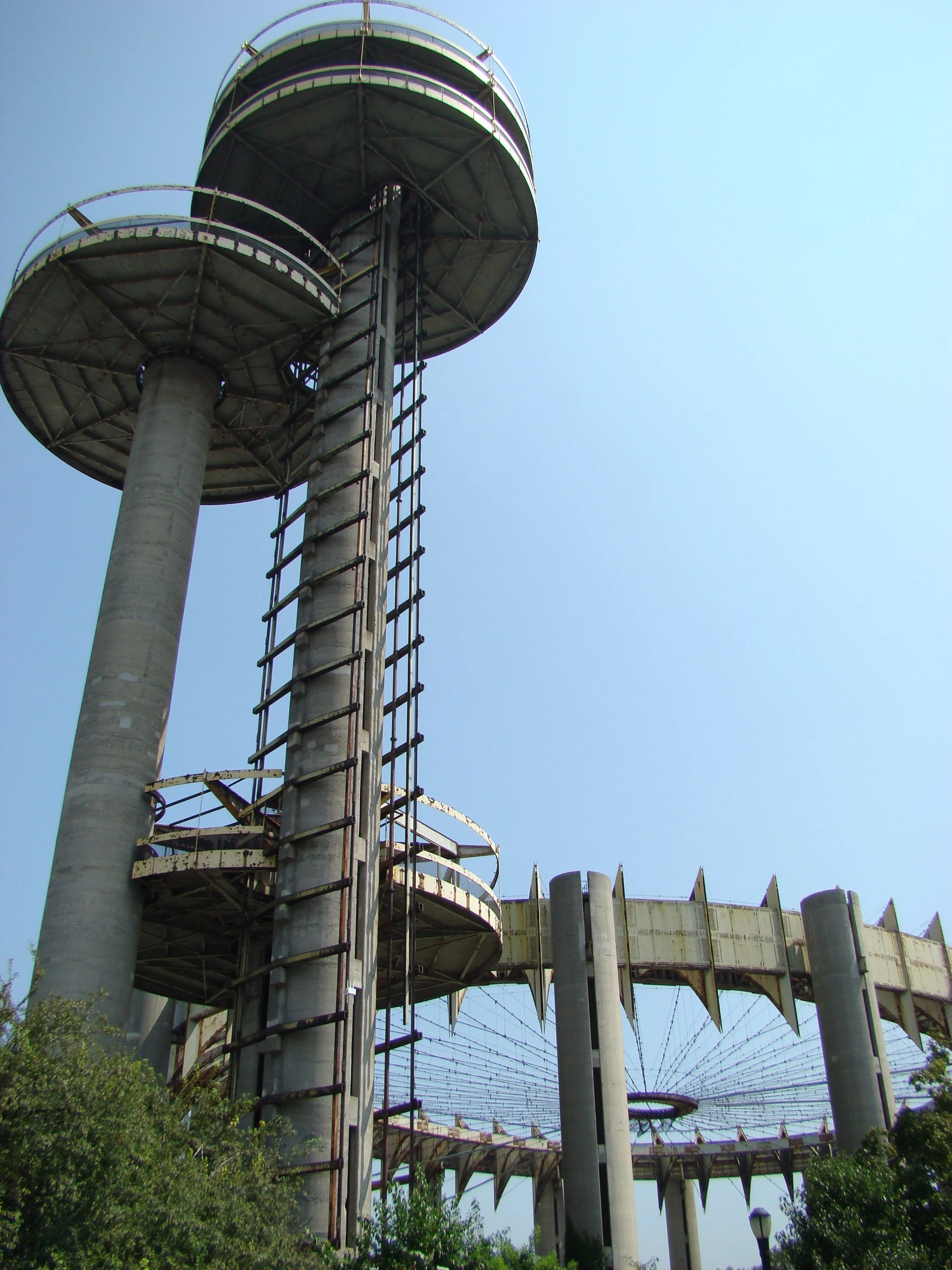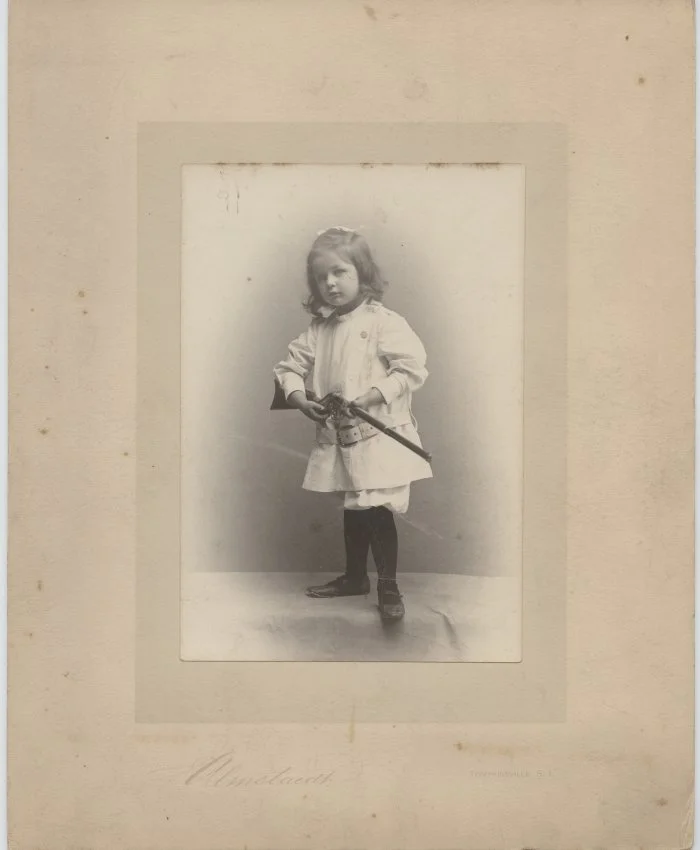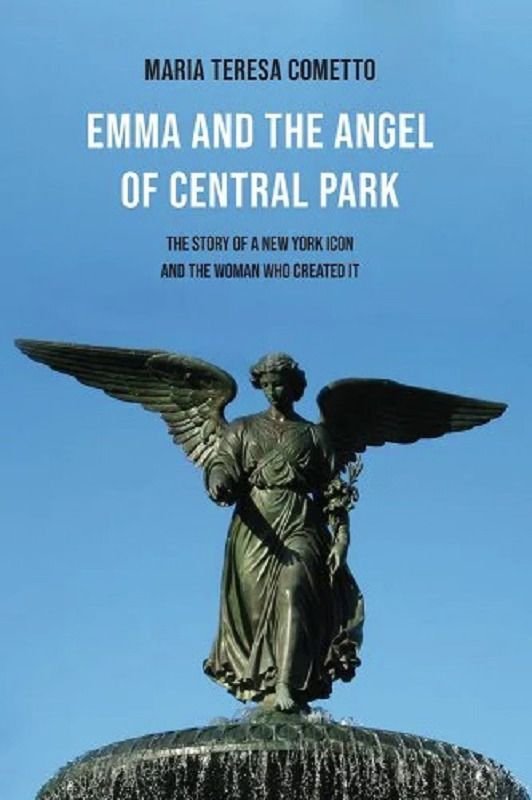Spectacular Ruins: Conservation and Boosterism in Flushing Meadows-Corona Park
By Melissa Zavala
On either side of debates over development and progress is the need to protect public health and open space belonging to us all equally. The borough of Queens faces a future of sinking developments just a short walk from each other. The funding and political will to preserve a prized structure have been missing for over half a century despite public interest. Now, the city considers losing 65 acres of parkland to a capitalist venture as its best option for preservation, especially as a response to flooding and rising temperatures, as has happened along the waterfront in Long Island City. It does not matter that LaGuardia Airport and nearby Arthur Ashe Stadium are also sinking or that a casino can very well mean more tumbling ruins. Will the city soon inherit another shrine to consumption in need of rescue from the fate of a neighboring sinking relic, if not in Flushing, then near the airport or elsewhere? Which world of tomorrow is worth preserving? This is an ongoing challenge facing the city.
Read More“Serving Canada in His Majesties Armies”: A Staten Islander in the Canadian Expeditionary Force
By Phillip Pappas
Across the United States, immigrant communities voiced their opinions about the wartime activities of the European nations and the American government’s policy towards the conflict. In the five boroughs of New York City, where three-fourths of the nearly 5 million residents were immigrants and their children, ethnic groups held rallies, parades, and demonstrations, sponsored public lectures, raised funds, and used the press to respond to the declarations of war in Europe and to promote the plight of their homelands. Many New Yorkers sought opportunities to join the fight in Europe. Some were resident aliens who were registered reservists in the militaries of their respective homelands, while others were U. S. citizens with cultural ties and ideological sympathies to the combatants.
Read MoreFrances Goldin and the Moses Threat to Cooper Square
By Katie Heiserman
Less remembered than her West Village counterpart Jane Jacobs, Frances Goldin deserves attention and further study as a model of both forceful and joyful neighborhood organizing. An activist with a distinctive style, she brought the community together and sustained engagement over many years. In her 2014 oral history interview with Village Preservation, Goldin highlighted the egalitarian, community-centered approach at the core of her work with CSC: “Fifty-nine years ago, dues were a dollar a year, and today, dues are a dollar a year.”
Read MoreAn Excerpt from Born in Blood: Violence and the Making of America
By Scott Gac
The Great Strikes of 1877 are recognized as a significant example of forceful labor protest in the United States. But, if we only look at what the workers did, we miss the important role of the state and state-backed violence in controlling workers and supporting the growth of American industrial capitalism. And it is this revolution of industrial capitalism, a revolution of contracts, wages, and courts backed by federal, state, and local force, that workers resisted during the Great Strikes. The following excerpt from Born in Blood: Violence and the Making of America details how Social Darwinism helped buttress worker suppression in the post-Civil War era and how, in 1874, the brutal treatment of peaceful working-class protesters in New York City’s Tompkins Square Park foreshadowed the militant response to workers seen three years later in the Great Strikes.
Read MoreFrom Rome to New York: The Angel of the Waters
By Maria Teresa Cometto
Born in New York City in 1815, she [Emma Stebbins] was one of the most famous and applauded American sculptors in 1863 when she got the commission for the fountain, the first woman to be commissioned for a public artwork in New York City. But after the inauguration she retired from artistic activity and was soon forgotten. When Emma died in 1882, the New York Times did not dedicate an obituary to her, or even a news item. Only in 2019 it published an article on her for its “Overlooked” series: a posthumous tribute, atoning for the newspaper’s silence on such a remarkable artist.
Read MoreStreets in Play: The Playstreets Photography of Katrina Thomas
By Rebekah Burgess and Mariana Mogilevich
Photographs of recreation programs like this one were commissioned to offer visual proof that, after four summers of nation-wide protest and violence, starting in Harlem and Bedford-Stuyvesant in 1964, the city was compensating for a long-term lack of investment in low-income, racially segregated neighborhoods…. A few of Thomas’ images were utilized for official purposes, reproduced in pamphlets to attract or to thank program sponsors, but her exceptional eye transcended the municipal task. Her lens recorded the city's sponsored activities as well as the more candid action at the edge of the frame. These captivating, impromptu images provide a rare perspective on a distressed urban landscape, privileging a child’s-eye view of the possibilities for play and delight.
Read MoreSaving the Bronx River: An Excerpt From South Bronx Rising: The Rise, Fall, and Resurrection of An American City
By Jill Jonnes
Until the 21st century, few residents of New York City, much less the South Bronx, even knew there was a Bronx River, the City’s only river. And why would anyone know? For more than a century, the banks and flowing waters of the lower Bronx River had long been largely fenced-off and out of sight behind an almost-solid wall of riverfront factories, gargantuan scrap metal yards, sprawling warehouses, and parking lots (including, starting in 1967, the massive Hunts Point wholesale food market). The lower five miles of the twenty-three mile river below the New York Botanic Garden and Bronx Zoo served as an industrial dump and sewer, its few access points blocked by gigantic mounds of submerged cars, worn-out tires, less identifiable garbage, and rusting junk…
Read MoreBefore Central Park
Reviewed by Kara Murphy Schlichting
Before Central Park is Sara Cedar Miller’s fourth publication about New York City’s famous greensward. Miller is historian emerita and, since 1984, a photographer for the Central Park Conservancy. Before Central Park is distinctive in its combination of Miller’s photography, her expert understanding of the park’s geography and archeology, and her meticulous real estate history of parkland from the 17th through the 19th centuries.
Read More







